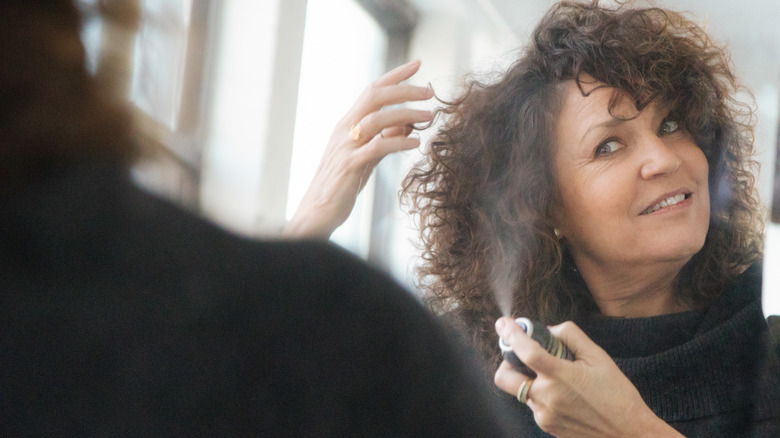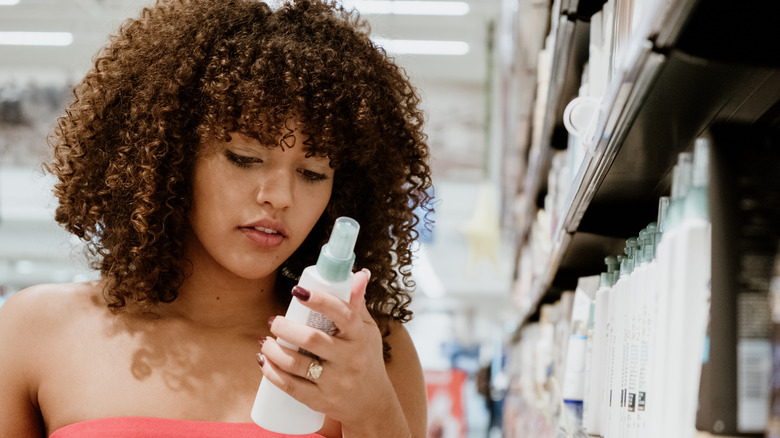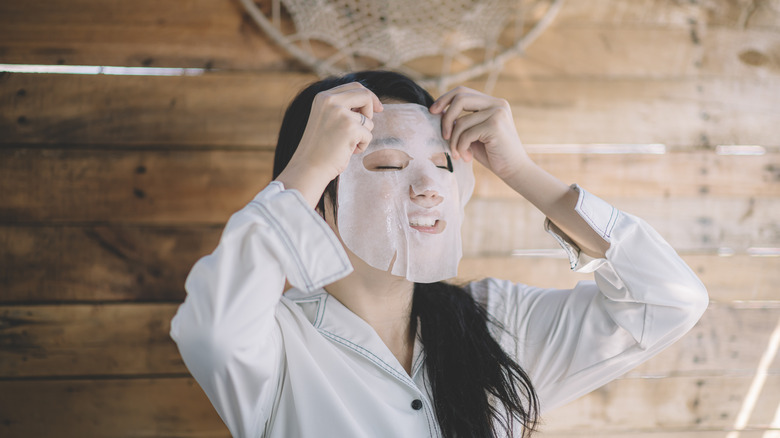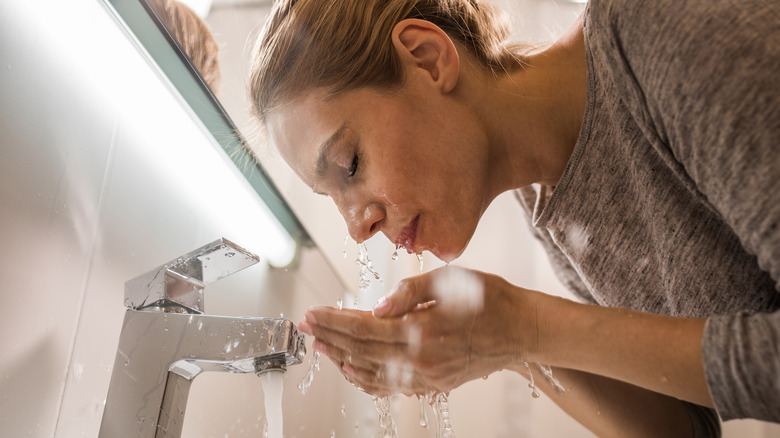Hairspray Could Be Causing Your Rosacea Flare-Ups - Here's What To Do
We may receive a commission on purchases made from links.
Rosacea is a disorder of the skin that can cause burning, redness, broken blood vessels, and small pustules to appear on the face. While the cause of the disorder is unknown, it is most prevalent in fair-skinned women. Rosacea is not curable, so it requires careful management to prevent flare-ups. The ingredients in cosmetics, including skincare, makeup, and hair care products are common symptom triggers, as per the Cleveland Clinic.
If you deal with rosacea, you've probably already assessed your skincare and makeup products and removed or replaced the ones that seem to cause flare-ups. If your symptoms continue to flare and you're not sure why, consider one often overlooked culprit: hairspray. Since hairspray isn't purposely applied to the skin — but can end up on it due to aerosol overspray — it's all too easy for it to slip your mind as a potential irritant. If you're struggling with rosacea flare-ups even after changing your skincare and makeup products, the solution could be as easy as covering your face or rearranging your skincare routine.
Assess your hairspray
Skin that is affected by rosacea can react to any ingredient with the potential to cause skin irritation. The most common culprits include various alcohols and added fragrances, according to the National Rosacea Society. Since it's not uncommon for people with generally sensitive skin to often react to these ingredients as well, there are a decent number of irritant-free hairsprays on the market. If you notice rosacea flare-ups on the same days you use hairspray, consider switching to a formula like FRAGFRE, which is free of common irritants.
For those who prefer to go au naturel, there are options like John Masters Organics that feature natural ingredients, such as organic aloe leaf juice and acacia senegal gum in place of standard chemicals. Even simply switching from an aerosol to a pump hairspray can reduce the amount of overspray that ends up on your face and triggers your rosacea. Since every person with rosacea will experience their own set of triggers, you may have to try more than one new product before you find one that your individual skin doesn't react to.
Try a spray gel
Depending on the style you're going for, a spray gel might work just as well as a hairspray for hold. Since gel is heavier and typically applied with a pump, it is less likely to end up on your skin and cause a flare-up when you apply it to your hair. While a gel product can leave your hair a little on the crispy side, this is easy to resolve.
Once your gelled hair is completely dry, simply scrunch or rake it with your hands or gently run a brush through it to break the gel's cast. You'll be left with hair that feels and looks soft, but stays where you originally put it. Just be sure to go for a flake-free formula to avoid a mess when you rake out the extra gel. Give a natural brand like All-Nutrient a try for a spray gel that utilizes gentle ingredients like babassu oil.
Go under cover
If changing your hair products isn't an option (or just sounds like too much work), there are easier ways to avoid hairspray-induced rosacea flare-ups. Once your hair is styled and your makeup is dry, simply drape a clean washcloth, hand towel, or folded tee shirt over your face before you spray your hair. Be sure to cover all the way to your hairline since rosacea flare-ups tend to affect the forehead (along with the nose and cheeks, per WebMD.
If you're a sheet mask fanatic, you could even incorporate a gentle, hydrating daily face mask into your morning routine. Just check the mask's ingredients to ensure it won't trigger your rosacea, and be sure to spray your hair completely before you remove the mask. Not only will you be shielding your face from any potential rosacea triggers contained within your hairspray, but you'll also be upping your skincare game.
Divide your skincare routine
If you don't feel like changing your hair products, adding a mask to your routine, or keep a shielding device around, consider simply styling and spraying your hair before you complete your skincare and makeup routine. You really only have to alter one step of your routine. Just use your face wash first, then pause your skincare routine while you style and spray your hair with hairspray.
After your hair has been sprayed, simply wipe your clean face with a warm washcloth to remove any overspray. Then, move on to your serums, lotions, makeup, and sunscreen as usual. Having rosacea can be a pain — both literally and figuratively — but it doesn't have to prevent you from styling your hair the way you want to. A simple product swap or tweak to your existing routine is all you need to achieve as much hold as your hairstyle requires without ending up with a flare-up.




